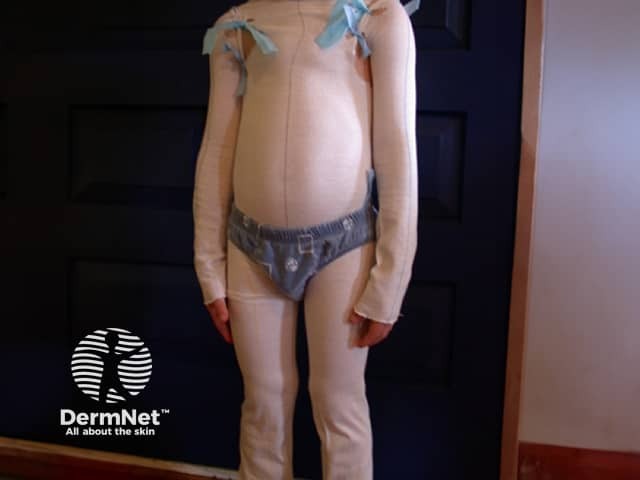Main menu
Common skin conditions

NEWS
Join DermNet PRO
Read more
Quick links
‘Wet wraps’ are wet bandages wrapped over emollients and/or topical steroid creams to areas of red, hot, weeping eczema (most often due to atopic dermatitis). It may also be valuable in erythroderma, whatever its cause.
Wet wraps work via three different ways:
In addition, the bandages provide protection from the itching and scratching cycle so that skin gets a chance to heal properly.
Wet wraps are most often applied in a hospital for severe eczema. However, wet wraps may also be applied in the community or at home at the first signs of a worsening condition to reduce the need for hospital admission.
There are different methods and bandages used for wet wrapping but the basic technique is as follows.
Convenient eczema garments have been developed for wet wrapping children with eczema, e.g. Ad RescueWear™, Comfifast™ Easywrap™ and Tubifast™. Medical-grade silk garments are not suitable for wet wrapping.

Tubular bandages

Tubular bandages
Generally, wet wraps are used for a few days until the redness, swelling and weeping has settled down. To maintain results, emollients should be applied frequently throughout the day to the affected areas.
The benefits of wet wrapping include:
Currently there is little evidence to show that a topical steroid under wet wraps produces more side effects than if applied normally to skin without wet wraps. Minor side effects of topical steroids include burning, irritation and stinging when first applied. If the coldness is unpleasant, two layers of dry wraps may be used.
One study found that a wet wrap with steroid, used for prolonged periods, was linked with bacterial infection and a drop in cortisol levels.